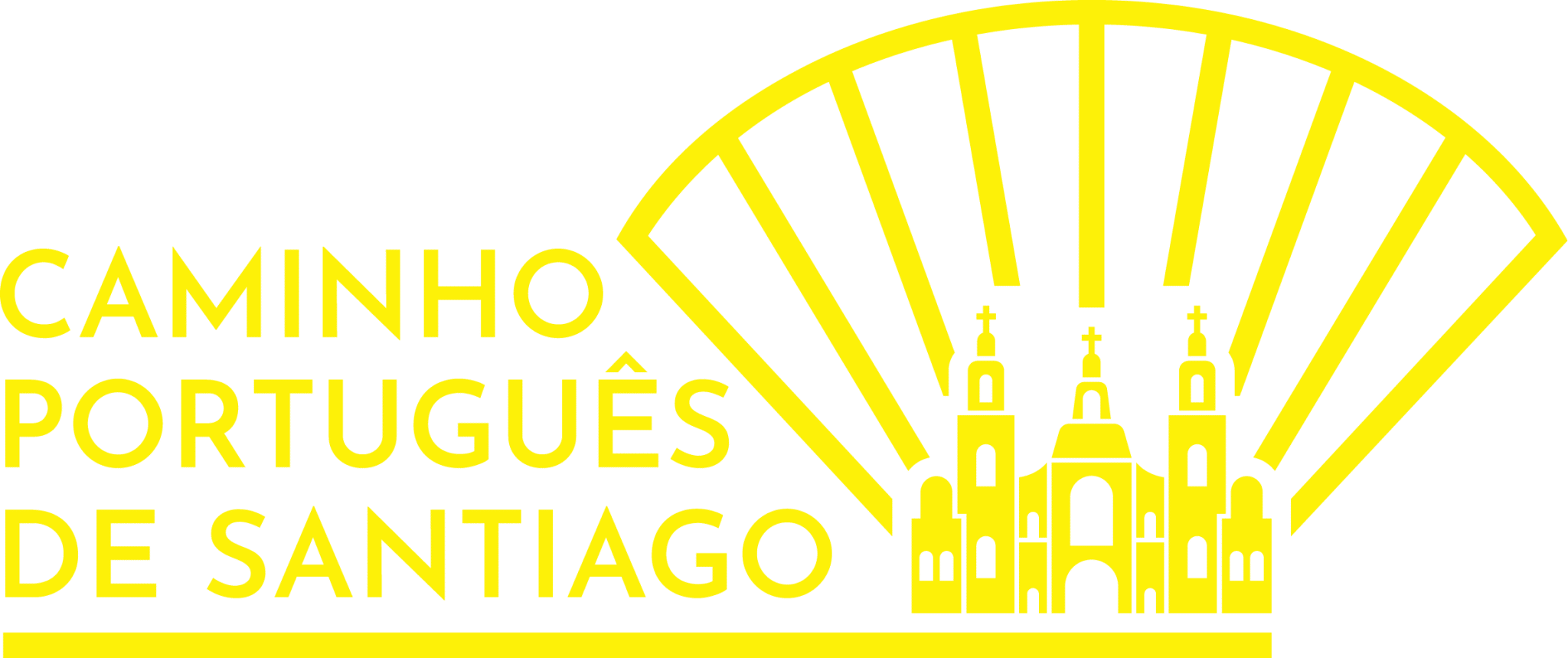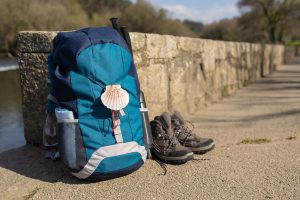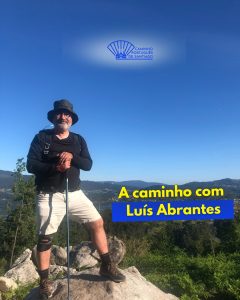The Camino Portugues de Santiago, or Portuguese Way, is the pilgrimage route that calls to thousands of travelers each year with its rich history, vibrant culture, and stunning landscapes. As one of the routes to the famous Santiago de Compostela in Spain, this Way offers a unique and less crowded alternative to the more popular Camino Francés.
Starting in Porto, there are three routes one can take for the Camino Portugues: the Central Portuguese Way, the Portuguese Coastal Camino, and the Litoral Trail of the Portuguese Coastal Camino. Each route takes you on a memorable journey filled with beautiful landmarks as you travel through villages and small towns while enjoying the magnificent scenery.
Choosing to walk the Camino de Santiago is more than a physical journey; it is a spiritual and reflective experience. With this, comes the preparation which is especially important as a pilgrim from the United States.
In this blog, we will take you through the steps for preparation, logistics for arriving in Porto, and where to stay once in the city. Join us as we get you ready to explore the route that thousands of pilgrims have taken before you.
Preparation and Logistics for the Way
Picking Which Route to Take
Planning your journey begins with choosing which route you want to take. The three routes (Central, Coastal, and Litoral Trail) all have their unique aspects along the millennial-trail. What to think about is whether you want to walk one of the original, historical routes of the Way, walk alongside the Atlantic ocean, or walk a more modern trail with the most picturesque landscape.
With this comes the length of each route in terms of preparing for the longevity of the walk. The Central Route, beginning in Porto, covers about 240 kilometers (150 miles) and takes about 10-14 days. The Coastal Route is approximately 250 kilometers (155 miles) from Porto to Santiago and generally takes 10-13 days to complete. The Litoral Trail of the Coastal Route is around 280 kilometers (175 miles) and takes 12-16 days to complete. The only rule of completing the Camino de Santiago is that you need to walk at least 100 kilometers/62 miles or bike 200 kilometers/124 miles in order to receive the Compostela certificate.
All three trails conclude at the final destination of Santiago de Compostela. Here, one can attend the sermon dedicated to those who have completed the Way and receive the Compostela certificate marking the completion of the journey.
Best Time of Year to Walk the Way
The best time of the year to plan your trek is in the spring (April - June). This season has the most moderate temperatures ranging from 10-20°C (50-68°F) with blooming floral landscapes. Another great season would be during Autumn (September - October) as it has similar moderate temperatures with the addition of the beautiful fall foliage. The weather is still pretty stable, however there is an increased chance of rain. In both of these seasons, the path is less crowded than the peak summer months (July & August), allowing for a more peaceful and reflective experience.
Preparing to Walk
The Camino Portuguese requires physical preparation, as you are walking on your feet for days on end. Before walking the Camino, you need to build up your physical and mental endurance. Our article, How to prepare the Way to Santiago, divides the training into three stages and to help you acclimate to the different terrains you'll face on the Way. Along with training, one may encounter blisters on their feet. This occurs when there's friction between the skin and fabric of the shoes one decides to wear. That being said, it's important to train in the sneakers you plan on wearing during the hike to ensure they are comfortable on your feet for long distances. In the case of other injuries, check out our article, The Camino of Santiago: The most common injuries, to avoid any excess uncomfortable moments on your Way.
Another way to prepare is through reading about the Camino de Santiago. Whether you're planning your route, missing it, or looking to learn more consider the 5 best books about the Camino de Santiago. These memoirs can provide you with the personal experiences of past pilgrims, giving you some inspiration for your path.
What to Bring
All a pilgrim needs is what they carry with them on their backs! In this case: TRAVEL LIGHT. Our article, What to bring in a backpack for the Camino de Santiago, outlines the specifics of what to pack, so make sure to check that out! Additionally, an important aspect to remember is that Portuguese charging ports are different from the United States ones. Make sure to purchase and bring a Plug Type C/F to charge your phone, camera, and other electronics on the way.
Traveling to Porto
The most important part of planning your Camino Portugues is how you are arriving in Porto, Portugal. TAP Air Portugal offers the most flights to Porto with ease in flying in Lisbon first and taking a connecting flight to Porto. John F. Kennedy International Airport (New York) and Newark Liberty International Airport (Newark, NJ) both offer direct flights to Porto using either Azores Airlines or TAP Air Portugal. While these flights may be more expensive, there are other alternatives by choosing flights with 1-2 stops before arriving in Porto. Also, many other international airports in the U.S. offer flights with 1-2 stops before arriving in Porto.
Time of year also impacts the price of the flights you choose when wanting to travel to Porto. Flight prices can range between $580-$2,708 depending on which airline, airport, and time of year you decide to walk the Camino. Typically, the flight prices increase during the summer months due to Portuguese holidays, like The Festas de Santo António, which takes place in June.
Depending on which airline you are flying out of, it may be upwards of a 19 hour travel day, so it's important to give yourself some time in Porto to beat jet lag and adjust to the new time zone before beginning your walk.
Staying in Porto
When arriving in Porto, there are many options as to where you can spend the night. There are a variety of hostels and hotels to stay in, in Porto such as the Passenger Hostel, Porto Wine Hostel, Onefam Ribeira, Lost Inn Porto, etc. All of which offer private or dorm stays; however the privates tend to be a bit more pricey.
An advantage to walking the Camino Portugues de Santiago is that you have access to staying in a hostel. An Albergue is a type of hostel specifically designed for pilgrims walking the Way and offers affordable, basic communal lodging along the Camino routes. In order to access them, you need to show your credential (pilgrim's passport) to stay. You also get this document stamped at each one along the way as proof of your journey. In Porto one option is the Porto Pilgrims Hostel (Porto's Pilgrim Hostel). Here, a pilgrim can stay for a night or more for between 16-96 euros, depending on if you want a shared room, dormitory, or private room. This Albergue is also open year-round, and make sure to make a reservation first.
Completing the Camino
Arriving in Santiago de Compostela is often an overwhelming experience as you are joyous in finishing your journey, but also left unsure of what to do next. The best thing to do is take advantage of the historical city you've long awaited. Our article, 8 suggestions for things to do when arriving in Santiago in 2023, highlights options for exploring the city after receiving your Compostela!
Other Questions to Consider when Preparing for the Camino Portugues de Santiago
Will I need a travel visa?
If you are traveling for less than 90 days in Europe, a visa is not necessary. However, you will need your U.S. passport and Pilgrim's Credential.
Do I need reservations for all of the hostels I stay on along the Way?
To ease traveler's anxiety and make sure they have a spot for you, I recommend booking your albergues in advance. They tend to fill up quickly in the popular months of pilgrims walking the Way, so make sure tbook it your albergues in advance.
Is it safe to walk the Camino alone?
Generally speaking, yes! Everyone chooses to walk the Camino Portugues de Santiago for their own reasons and it is scary choosing to embark on this journey alone. With this in mind, incidents on the Way tend to be minimal and safety can be subjective to everyone. The good news is many hikers do the route, so if you're afraid you can always ask for help.
Read about how some past pilgrims answered this question in Is it safe to walk the Camino alone?
What is the food situation along the Way?
No matter which route you take, you won’t be short on affordable, delicious food. While some hostels may not offer the best quality options, many local restaurants have pilgrim-specific menus and other options to choose from. Word of advice: try all the local, authentic food you can along your journey.
Do I need to learn Portuguese to communicate with others on the Way?
Not necessarily. Most Portuguese people speak English or will be able to help you despite the language barrier. As an American, I recommend learning a few basic Portuguese phrases in case you run into any language translation issues.
For more FAQ, be sure to also check out The 50 most frequently asked questions about the Camino!
Walking the Camino Portuguese
With all of these factors in mind, be sure to properly prepare before your pilgrimage. If you're looking for more information about the Way, be sure to check out our other blogs including other pilgrims' Camino de Portugues experiences, benefits to walking the Way!
If you know someone who is looking to do the Camino Portugues or are planning another trip, share this article to prepare for your journey.
Wishing you a good journey!







